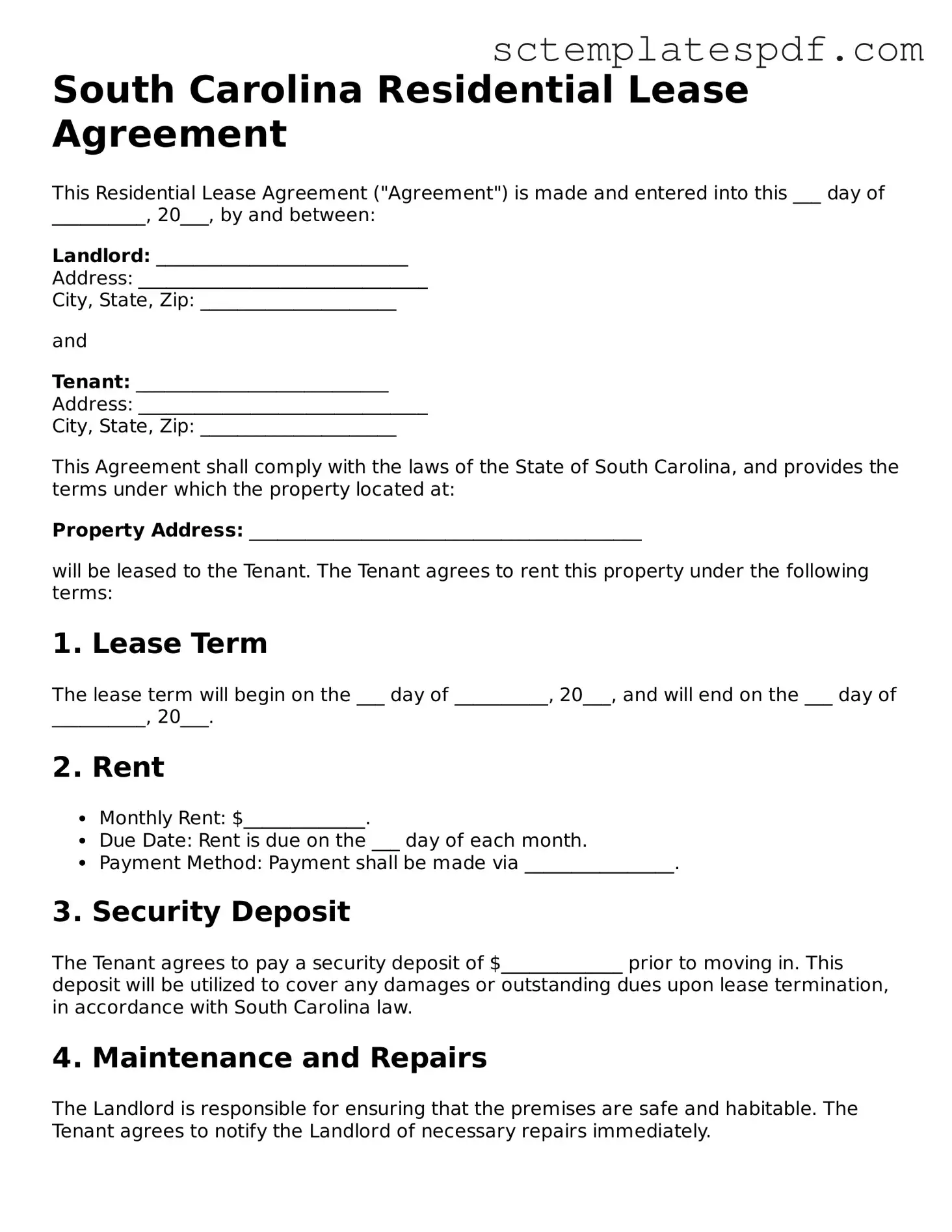Valid South Carolina Residential Lease Agreement Document
The South Carolina Residential Lease Agreement is a legally binding document that outlines the terms and conditions of renting a residential property. This form serves to protect both landlords and tenants by clearly defining their rights and responsibilities during the lease period. To get started on your rental journey, fill out the form by clicking the button below.
Fill Out Your Residential Lease Agreement
